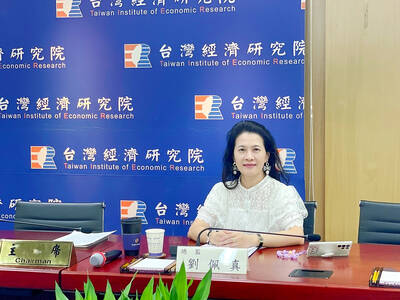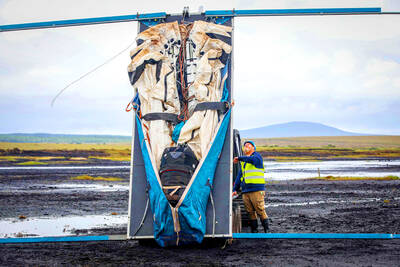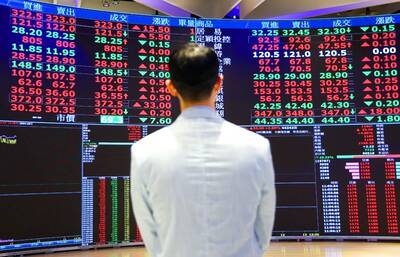The Year of the Ox begins later this month but the bull run is already over for Singapore’s property sector, described as the world’s hottest market just two years ago.
Prices of private homes fell 5.7 percent in the fourth quarter, following a 2.4 percent drop in the preceding period, the latest data from the Urban Redevelopment Authority (URA), the state agency responsible for land use planning, showed.
The fourth quarter marked the sharpest drop in home prices in a decade, URA said.
“Further contraction is on the way,” analysts from the Hong Kong-based CLSA brokerage and investment group said in their outlook for the property sector.
“We continue to expect the URA index to see an accelerated fall in the next quarter,” they said.
Local home prices have not fallen so far since 1998 when Singapore was stung by the Asian financial crisis that pushed the local property sector into a slump lasting until 2005, when the government approved the construction of two multi-billion-dollar casino complexes.
By 2007, real estate giant Jones Lang LaSalle was describing Singapore’s market as the world’s hottest, and the city-state’s property prices surged 31 percent overall.
Rents at condominium units favored by the many expatriates also dramatically increased and in some cases doubled.
CASINO-STYLE
While fourth-quarter data remains preliminary, analysts said the casino-inspired property boom is history now that the economy is in recession.
Analysts said the duration of the current property slump was difficult to predict but they agreed it will hinge on when Singapore pulls out of recession.
“A lot of it depends on the economy,” said Ong Choon Fah, executive director for consulting and research with DTZ real estate consultancy.
“The economy really underpins the market … People have to feel safe about their jobs. That is the first thing,” she said.
Serious buyers see pockets of opportunity in the current slump but are being unusually cautious because of the recession, Ong said.
Property agents at a show flat for a yet-to-be built condominium, located less than 20 minutes’ drive from the main Orchard Road shopping belt, said they were hopeful, despite the dismal market.
“There will always be buyers even in a tough market and our prices are rather attractive,” said one agent, who did not want to be named.
FALLLING
A two-bedroom unit at the condominium, which will come with a heated swimming pool and a gym, sells for about S$860,000 (US$583,000).
In good times, the 82m² apartment could fetch at least US$915,000, the agent said.
At another condominium project, launched last year, prices have also eased substantially. A one-bedroom unit measuring 58m² is priced at about US$800,000 — compared with almost US$1 million before the slump, the agent for the project said.
Some unsold units remain and the developer is offering incentives, including the absorption of interest charges in the first three years of the loan, providing the mortgage is taken with a preferred bank.
Until the economy recovers, prospective property buyers are likely to hold out in hope of better bargains, said Song Seng Wun, a regional economist with CIMB-GK brokerage.
“I think it’s a natural reaction to any big-ticket spending,” Song said. “If you are not in a hurry to buy, you will want to wait.”
Singapore’s economy shrank 12.5 percent in the fourth quarter of last year on a seasonally adjusted annualized quarter-on-quarter basis, its biggest contraction since records began in 1976, the government said.
SUFFERING
The city-state was the first country in Asia to fall into a recession when figures released in October showed two straight quarters of economic contraction.
Trade dependent Singapore has suffered as exports to key markets, including the US and Europe, have fallen during the worst global economic crisis since the Great Depression of the 1930s.
Earlier this month, the government again slashed its economic forecast for this year, predicting something in the range between a contraction of 2 percent and an expansion of 1 percent.

A proposed 100 percent tariff on chip imports announced by US President Donald Trump could shift more of Taiwan’s semiconductor production overseas, a Taiwan Institute of Economic Research (TIER) researcher said yesterday. Trump’s tariff policy will accelerate the global semiconductor industry’s pace to establish roots in the US, leading to higher supply chain costs and ultimately raising prices of consumer electronics and creating uncertainty for future market demand, Arisa Liu (劉佩真) at the institute’s Taiwan Industry Economics Database said in a telephone interview. Trump’s move signals his intention to "restore the glory of the US semiconductor industry," Liu noted, saying that

On Ireland’s blustery western seaboard, researchers are gleefully flying giant kites — not for fun, but in the hope of generating renewable electricity and sparking a “revolution” in wind energy. “We use a kite to capture the wind and a generator at the bottom of it that captures the power,” said Padraic Doherty of Kitepower, the Dutch firm behind the venture. At its test site in operation since September 2023 near the small town of Bangor Erris, the team transports the vast 60-square-meter kite from a hangar across the lunar-like bogland to a generator. The kite is then attached by a

Foxconn Technology Co (鴻準精密), a metal casing supplier owned by Hon Hai Precision Industry Co (鴻海精密), yesterday announced plans to invest US$1 billion in the US over the next decade as part of its business transformation strategy. The Apple Inc supplier said in a statement that its board approved the investment on Thursday, as part of a transformation strategy focused on precision mold development, smart manufacturing, robotics and advanced automation. The strategy would have a strong emphasis on artificial intelligence (AI), the company added. The company said it aims to build a flexible, intelligent production ecosystem to boost competitiveness and sustainability. Foxconn

STILL UNCLEAR: Several aspects of the policy still need to be clarified, such as whether the exemptions would expand to related products, PwC Taiwan warned The TAIEX surged yesterday, led by gains in Taiwan Semiconductor Manufacturing Co (TSMC, 台積電), after US President Donald Trump announced a sweeping 100 percent tariff on imported semiconductors — while exempting companies operating or building plants in the US, which includes TSMC. The benchmark index jumped 556.41 points, or 2.37 percent, to close at 24,003.77, breaching the 24,000-point level and hitting its highest close this year, Taiwan Stock Exchange (TWSE) data showed. TSMC rose NT$55, or 4.89 percent, to close at a record NT$1,180, as the company is already investing heavily in a multibillion-dollar plant in Arizona that led investors to assume